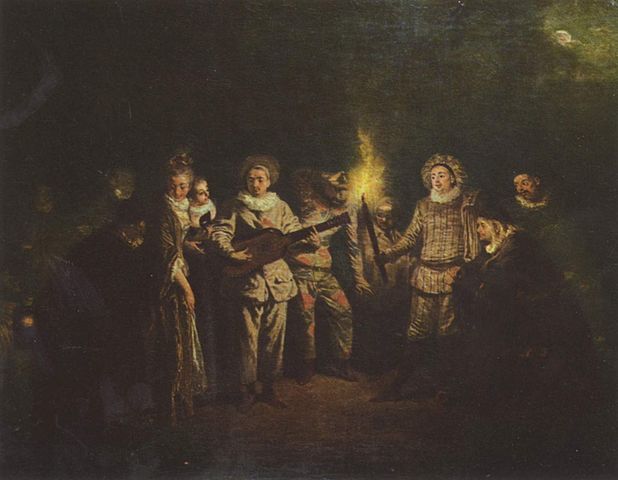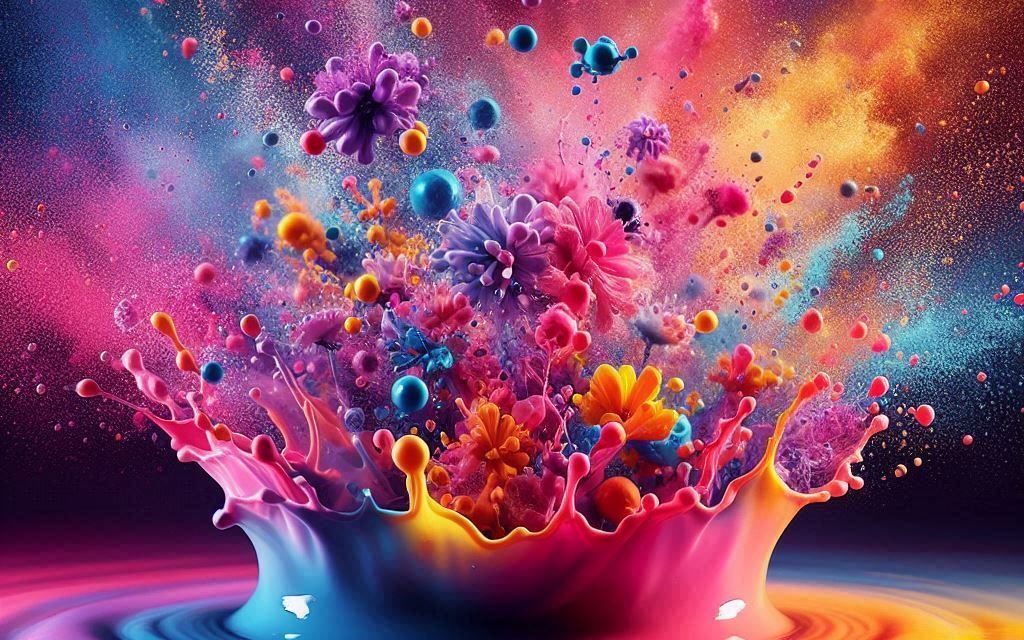Table of Contents
What is Chiaroscuro?
Chiaroscuro is an artistic technique that emphasizes the contrast between light and shadow to create a sense of volume and depth on a two-dimensional surface. Rooted in the Italian Renaissance, the term itself comes from the Italian words “chiaro” (meaning light or clear) and “scuro” (meaning dark or obscure). Although chiaroscuro has become primarily associated with the visual arts, especially painting, its conceptual implications extend into various artistic and philosophical discussions about perception, reality, and human experience.

By Jean-Antoine Watteau – The Yorck Project (2002) Photo by Commons.Wikipedia.org
Historical Development
The development of chiaroscuro can be traced back to the late Middle Ages and early Renaissance, but it reached its full potential during the High Renaissance. Early Renaissance artists, such as Giotto and Masaccio, began exploring light and shadow as methods for creating the illusion of three-dimensional space on a flat surface. However, it was not until the 16th century that artists like Leonardo da Vinci, Michelangelo, and Caravaggio fully embraced chiaroscuro as a defining feature of their work.
Leonardo da Vinci was one of the early masters of this technique. His famous work, the Mona Lisa, demonstrates the use of subtle gradations of light and shadow to render the human face with remarkable realism. Leonardo’s fascination with optics and the human eye’s perception of light helped him to push chiaroscuro to new heights. In his Treatise on Painting, Leonardo wrote extensively about the importance of light and shadow in creating depth and realism in art.
Caravaggio, another major figure in chiaroscuro’s history, is often credited with using the technique to dramatic effect. Unlike Leonardo’s subtle gradations, Caravaggio’s chiaroscuro is much more pronounced. His works, such as The Calling of Saint Matthew, use extreme contrasts of light and dark, often spotlighting figures against dark, almost black backgrounds. This heightens the emotional and narrative intensity of his scenes, drawing the viewer’s attention to key elements while simultaneously enveloping other aspects of the composition in mystery and ambiguity. Caravaggio’s bold approach to chiaroscuro had a profound influence on the Baroque period, particularly inspiring artists like Rembrandt and Georges de La Tour.
The Technique of Chiaroscuro
The technical essence of chiaroscuro lies in the artist’s ability to manipulate light and shadow to model form. By using a light source, real or imagined, artists create a distinction between illuminated and shaded areas. In a well-executed chiaroscuro painting, the light appears to emerge from within the composition, defining the contours of objects and figures, making them appear solid and three-dimensional.
The manipulation of light and shadow can be divided into several levels:
- Highlight: This is the brightest point where light directly hits the surface. In a face, for example, the tip of the nose or the forehead might catch the highlight.
- Light: The area that receives less direct light than the highlight but is still illuminated.
- Half-tone: This area transitions between light and shadow. It is neither fully lit nor entirely in shadow, and it helps smooth the shift between light and dark.
- Core Shadow: The darkest part of the shadow, where light is completely absent.
- Reflected Light: Even within the shadow, some objects may reflect light onto each other, creating subtle variations within the darker areas.
- Cast Shadow: The shadow cast by an object onto another surface, which further defines the light source’s direction and intensity.
In chiaroscuro, these different degrees of light and shadow are manipulated to bring depth and drama into the composition. It is through the artist’s careful calibration of these values that a flat surface can come to life, making the viewer perceive a sense of space and tangible form.
Philosophical and Symbolic Implications
Chiaroscuro goes beyond being a mere technique in art; it has philosophical and symbolic implications. The interplay of light and shadow can be seen as a metaphor for the dualities that shape human existence—good and evil, knowledge and ignorance, clarity and obscurity, life and death. In religious art, chiaroscuro often functions symbolically, with light representing divine presence or enlightenment, while darkness connotes sin, ignorance, or death. This is evident in many works by Caravaggio, where dramatic contrasts between light and shadow underscore the moral and spiritual struggles of his subjects.
In a more existential sense, chiaroscuro can also be interpreted as a reflection of the human condition. The areas of light represent moments of clarity, joy, or understanding, while the shadows signify confusion, suffering, or the unknown. This balance between light and dark resonates with broader philosophical inquiries about reality and perception. Much like Plato’s allegory of the cave, where shadows represent a distorted view of reality, chiaroscuro reminds viewers that perception is often shaped by the interplay of what is visible and what is hidden.
Chiaroscuro in Other Art Forms
Although chiaroscuro is most commonly associated with painting, the concept also appears in other forms of art and media, such as drawing, printmaking, and photography. In drawing, artists often use a combination of charcoal and white chalk on toned paper to create chiaroscuro effects. The chiaroscuro woodcut, a printmaking technique developed in the early 16th century, uses different woodblocks to print both light and dark areas, resulting in a highly dramatic effect.
Photography, too, has embraced chiaroscuro. In black-and-white photography, where color is absent, the contrast between light and shadow becomes one of the most important tools for creating mood and narrative. The work of photographers like Ansel Adams and Edward Weston demonstrates how chiaroscuro can shape a photograph’s emotional and atmospheric depth.
In cinema, filmmakers use lighting techniques inspired by chiaroscuro to heighten dramatic tension. German Expressionist films, such as The Cabinet of Dr. Caligari (1920), and later film noir, employed strong contrasts between light and dark to create a moody, suspenseful atmosphere. Directors such as Alfred Hitchcock and Orson Welles also utilized chiaroscuro in their films, manipulating light and shadow to underscore psychological tension and thematic complexity.
Conclusion
Chiaroscuro is not just an artistic technique; it is a powerful method of visual storytelling that draws upon the human experience of light and darkness. Its development during the Renaissance and later refinement by artists like Caravaggio and Rembrandt has left an indelible mark on the history of art. Through chiaroscuro, artists invite viewers to contemplate not only the formal qualities of their work but also the larger philosophical questions of existence, morality, and perception. Whether in painting, drawing, photography, or film, chiaroscuro continues to captivate and challenge both artists and audiences by embodying the tension between what is seen and what lies in shadow.


No responses yet